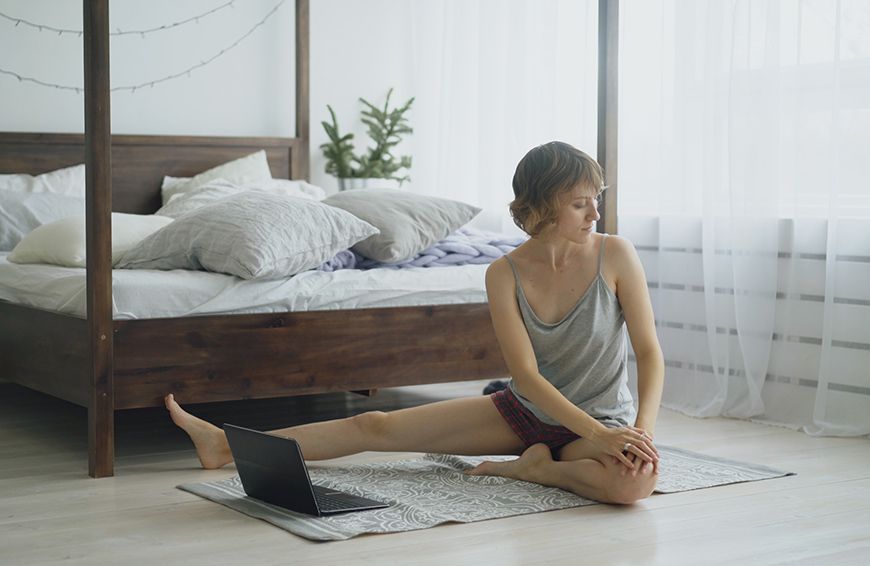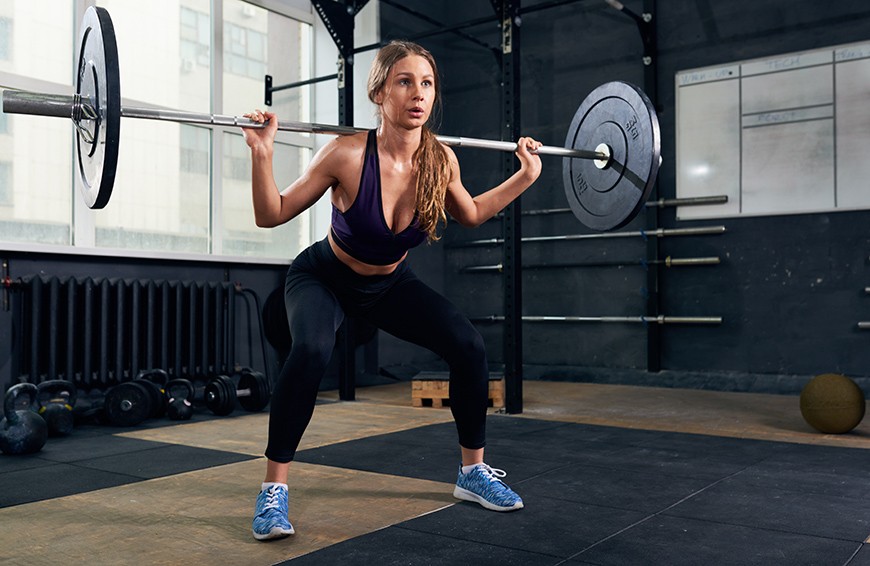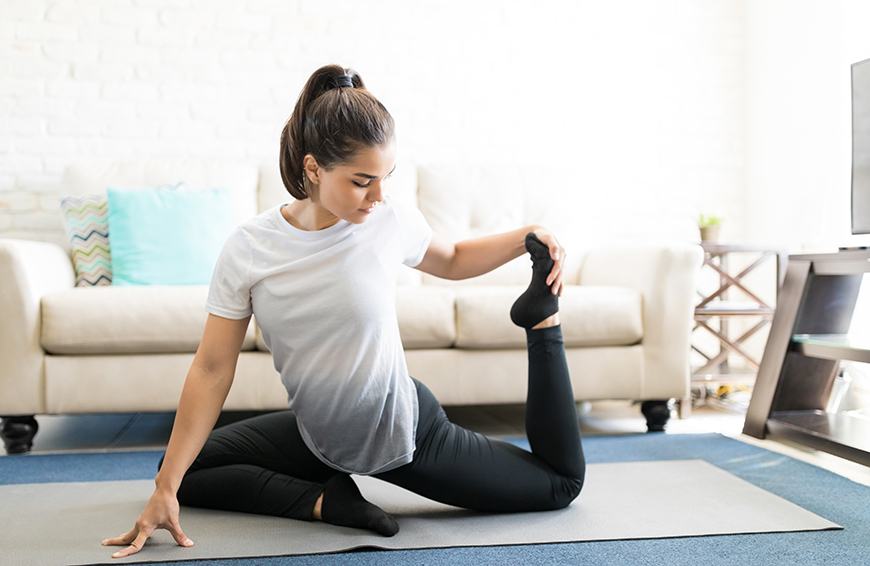Hips Don’t Lie: a Month of Daily Romwod Workouts Actually Made Me More Flexible
Truth be told, I'm the exact opposite of flexible. I can’t touch my toes without a solid infrared sauna sesh first. My crow pose is more face-plant than soaring bird. And coaches (CrossFit and rugby are my fitness jams) have told me my lack of mobility—AKA the ability to move well—hinders my form and keeps me from lifting heavier weight. So I decided to try out a month of RomWOD—an online streaming platform that’s designed to help athletes move better with just 15 minutes of range of motion work per day.
The decision came after my hip joint creaked when I bent down to pick up my hairbrush in the bathroom one morning. I remember thinking, at 24-years-old, that can’t be good. And when my knee cracked like bubble wrap during a squat-focused WOD at my CrossFit box, I became worried that my recent aches (plus the long hours spent sitting at my desk writing now that I was full-time freelancing) would lead to more serious problems down the road. So, I called a few fitness experts for advice.
“Couple how much you’re sitting with your go-getter, all-out mentality during CrossFit and HIIT, and it’s not surprising your body feels stiff,” says physical therapist Grayson Wickham, CSCS, founder of Movement Vault, a mobility and movement company. My CrossFit coach CJ Maldonado CF-L1, shared similar sentiments and suggested that a daily mobility practice would do my body some good, both from a pain-reduction and performance-improving standpoint.

{{post.sponsorText}}
But could a month-long foray with RomWOD help reverse the effects of my new sit-all-day routine—plus make me swole and flexy, as promised? Keep reading to find out.

Wait, so what exactly is RomWOD?
The “Rom” in RomWOD stands for "range of motion," while the "WOD” is CrossFit-speak for "workout of the day." “RomWOD is the first step for tackling mobility,” says Kyle Parker, a functional range conditioning mobility specialist at Exceed Physical Culture in New York City. "But while its roots are in CrossFit, it's not just for CrossFit athletes, anyone can benefit from it," he says. RomWOD offers online, follow-along-video stretching routines for $14 per month. Doing them regularly over time can increase your range of motion, and therefore improve position, posture, power, and efficiency. This will ultimately improve performance and reduces the risk of injury, Maldonado tells me.
"While [RomWOD's] roots are in CrossFit, it's not just for CrossFit athletes, anyone can benefit from it."
“Mobility requires a well-programmed approach, and RomWOD gives that to you by allowing you to search for a follow-along video based on movements in your upcoming workouts, specific joints or muscles, or daily videos, which are more general,” Parker says.
It was my hips, in particular, that were really feeling not-so-limber—they can become tight because of anything from cycling to excessive TV watching or extended sitting—so I decided that for the first week I’d do only routines that targeted the muscles that connect to and stabilize the pelvis. Then, for the following three weeks I’d go through the daily programmed WODs, which Parker said was my best bet for improved mobility everywhere (like my shoulders, ankles, and back).

What doing a week of RomWOD feels like
The first day, I lit my favorite candle in the name of Zen vibes, pulled on a pair of wear-everywhere leggings, migrated to the giant carpet (which is so plush, it’s essentially, a giant yoga mat) on the other side of my bedroom/office/mobility den, and opened up my laptop.
For the next 17 minutes, I pigeoned, saddled, straddled, and lizard-ed while a baritone voice flowed through the speakers telling me how much longer I had in every pose. The moves may be familiar to yogis, but the practice felt less like a class and more like a meditation for my body. Each one lasted two to three minutes—which felt long when I listened to the breath counts provided, but short if I really counted.
By the end of that first video, my hips truly felt looser—and so did my mind.
“RomWOD is very passive practice, [but] it’ll help you relax,” Parker tells me. And by the end of that first video, my hips truly felt looser—and so did my mind. In fact, I felt so much less-stiff, that I decided to try writing on the ground in a straddle position—the eager move ended up putting my bum to sleep so I switched back to my desk, but I was happy for an excuse to get out of my seat for a bit.
The rest of the first week looked similarly: I interspersed eye strain and caffeine crashes with movement to the hypnotic voice. Day six was particularly deadline-light, so I did two separate videos because Maldonado had practically given me permission: “Mobility: it’s prehab," he says. "It should be something you do every day. Do it all day, even. Do it as much as you want.”
I hit a back squat PR later that same day during my CrossFit workout, which likely was not a coincidence. One study found that when athletes with tight hips squatted, they had decreased muscle activation in both the hip flexors and extensors. Meaning, that when the hip muscles tighten, a chain reaction occurs and the surrounding muscles are affected. It's likely that because I'd spent time opening my hips those previous days, I'd been able to increase my muscle activation and squat more weight. *Prayer hands* thank you, RomWOD. If I was seeing these results after a week, I started to wonder what an entire month of daily range or motion workouts would feel like.

After a month of RomWOD, I was ready to talk results
Even though I already felt more flexible after that first week, it wasn’t until about two-and-a-half weeks in that I really started seeing the physical benefits of RomWOD—and all over. Walking around my apartment, I sounded less like the broken wind chime at a haunted house. My back and hips felt less agitated and more open during both my workday as I sat and when I snatched (an Olympic weightlifting move often found in CrossFit).
The biggest thing I learned was how much a dedicated mobility practice effects, well, everything: my posture, my performance during CrossFit, my level of aches and pains, how difficult it is to bend over and pick something up off the ground. (Believe it or not, even sex felt easier!). Better yet, it gave me an excuse to get up and out of my seat, step away from my work, and recalibrate, at least once a day.
Of course, it’s only been 30 days, so my mobility is still far from earning the label: “good.” But it's way better than it was before, and I can only imagine how much it'll continue to improve if I keep up with this schedule.
BTW, mobility and proper recovery are both important, but so is prehab. Here’s why.
Loading More Posts...